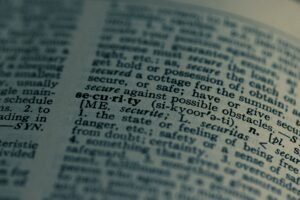Understanding the IELTS Reading Test
The IELTS Reading test assesses your ability to:
✔ Read quickly and efficiently
✔ Understand main ideas & details
✔ Recognize opinions and arguments
✔ Follow logical connections
Test Format
-
Duration: 60 minutes
-
Questions: 40 (divided into 3 sections)
-
Text Types:
-
Academic: Journals, articles, academic texts
-
General Training: Ads, notices, workplace documents
-
Top 5 IELTS Reading Tips for Success
1. Master Time Management
-
Spend 20 minutes per section (16-17 mins answering, 3-4 mins checking).
-
Skip difficult questions and return later.
-
Never leave blanks (guess if unsure).
2. Read Instructions Carefully
-
Word limits matter (e.g., “Write ONE WORD ONLY”).
-
Check if answers need to be from the text or your own knowledge.
3. Don’t Panic Over Unknown Words
-
Use context clues to guess meanings.
-
Focus on keywords related to questions.
4. It’s a Vocabulary Test in Disguise
-
Synonyms & paraphrasing are key (e.g., “benefit” vs. “advantage”).
-
Learn topic-specific words (e.g., “sustainability,” “globalization”).
5. Predict Answers Before Reading
-
Scan questions first to identify what to look for.
-
Highlight keywords in both questions and passages.
IELTS Reading Question Types & Strategies
1. True/False/Not Given
-
True: Information matches the text exactly.
-
False: Contradicts the text.
-
Not Given: Information is not mentioned.
Tip: Avoid overthinking—stick to what’s written.
2. Matching Headings
-
Read headings first, then skim paragraphs for main ideas.
-
Eliminate obviously wrong options.
3. Multiple Choice
-
Read all options before choosing.
-
Beware of distractors (similar but incorrect answers).
4. Summary Completion
-
Identify missing word types (noun, verb, adjective).
-
Check grammar (singular/plural, verb tense).
5. Matching Sentence Endings
-
Look for grammatical & logical connections.
-
Eliminate impossible matches first.
6. Short Answer Questions
-
Strictly follow word limits (e.g., “NO MORE THAN THREE WORDS”).
-
Answers are usually in order.
7. Diagram Labeling
-
Scan for keywords near diagrams.
-
Check spellings carefully.
8. Matching Information to Paragraphs
-
Skim for keywords (names, dates, concepts).
-
Not all paragraphs will be used.
Academic vs. General Training: Key Differences
| Feature | Academic | General Training |
|---|---|---|
| Texts | Journals, research papers | Ads, notices, workplace docs |
| Difficulty | More complex vocabulary | Everyday English |
| Question Types | Same for both | Same for both |
How to Improve Your Reading Score
1. Expand Your Vocabulary
-
Read English newspapers (BBC, The Guardian).
-
Note synonyms & paraphrases while practicing.
2. Practice Skimming & Scanning
-
Skim for main ideas (read first/last sentences of paragraphs).
-
Scan for keywords (names, numbers, dates).
3. Take Timed Practice Tests
-
Simulate exam conditions (60 mins, no breaks).
-
Review mistakes to avoid repeating them.
4. Predict Before Answering
-
Guess answers before looking at options.
-
Eliminate obviously wrong choices.
Common Mistakes to Avoid
❌ Spending too long on one question → Run out of time.
❌ Ignoring instructions → Lose marks on word limits.
❌ Overcomplicating answers → Stick to the text.
❌ Not checking spelling → Simple errors cost points.
Final Tips for Test Day
✅ Stay calm—difficult questions are normal.
✅ Answer every question (no penalty for guessing).
✅ Transfer answers carefully (check numbering).
✅ Wear a watch (not all centers have clocks).





